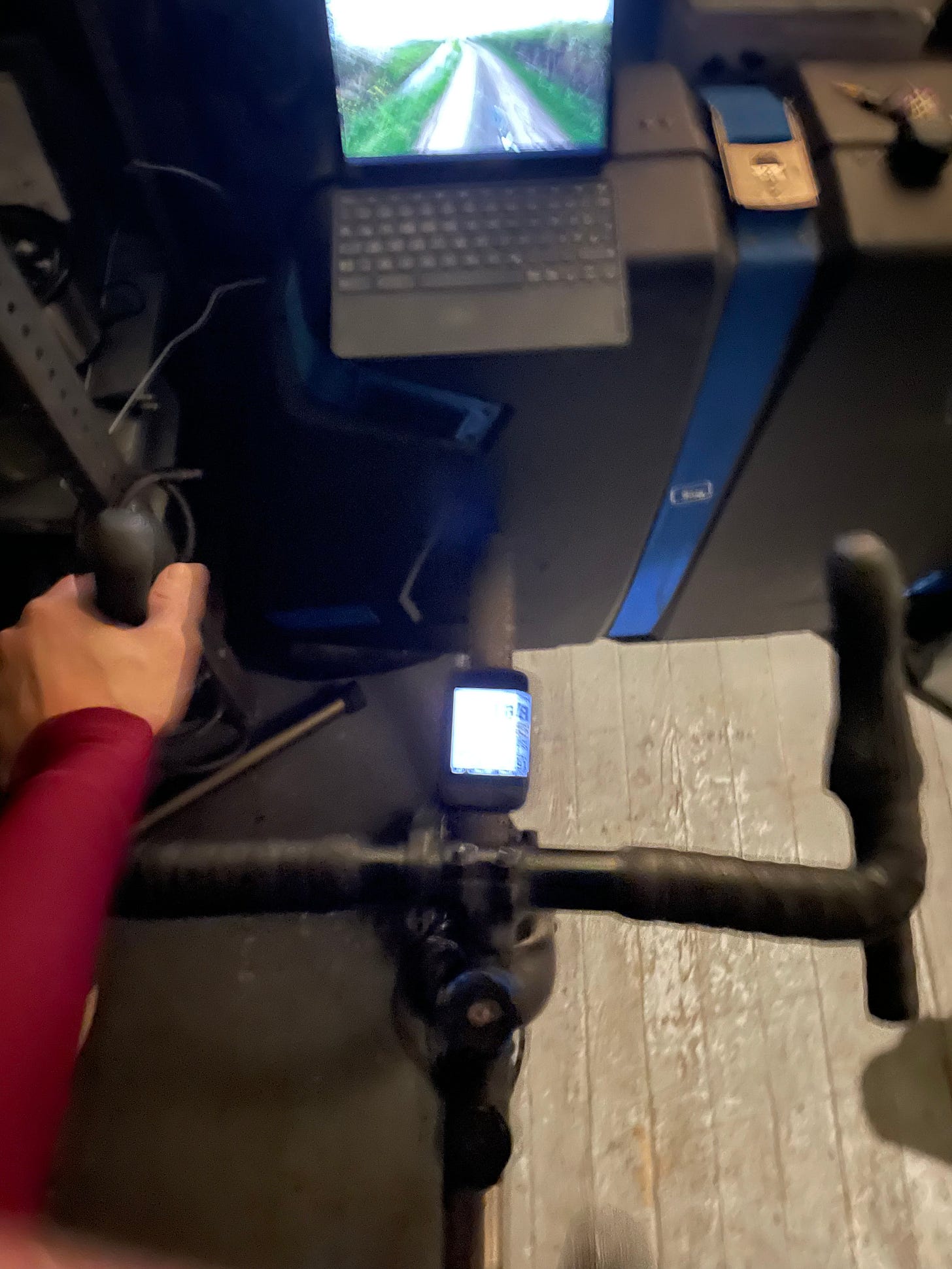Now that we’ve covered a little philosophy behind training and why training might be valuable, let’s get into the first bit of the actual regimen. As a reminder, here’s where we’ve been and where we’re going over the next few weeks.
Part 2 – Base Endurance
Oh, and make sure you’re subscribed so you don’t miss any of it!

Go Slow To (Eventually) Go Fast
The most important part of any offseason schedule is base endurance. This can be on the bike, cross training, or a combination of both, but the point is to build foundational endurance. Not only will this let you go further come outdoor season, but it will provide a platform for taking advantage of on-bike intensity later.
To cut to the chase, this means staying in the endurance zone – religiously – and fitting as much volume as I can into two to three days a week. It is tempting to push for more, to get defensive (if you have a power meter) about the number of watts you’re pushing. DON’T. Base endurance is playing the long game. The power meter on my indoor trainer (I don’t have one on my bike) isn’t particularly accurate, but I measure endurance zone by heart rate anyways. (Make your own call on power versus heart rate.) Depending on how tired I am from other workouts, this can mean my power output varies by as much as 30 watts ride to ride. I have to very intentionally remind myself not to pay attention to that number. The time on the bike is more important, and staying in endurance zone means I’m building base endurance while preserving my ability to work hard on other days, in other workouts.
Let’s go back to that phrase “as much volume as I can” for a moment, because it’s doing a lot of work in that sentence above. As I said earlier, this looks different for everyone, and it’s looked different for me in different years. Last year, it meant riding 60 to occasionally 90 minutes (plus a short warm up and cool down) for each day I was on the indoor trainer. That was as much as my schedule would allow. In the past, I’ve been able to do two hours a little more consistently. More is better, but don’t be discouraged if an hour (or even less!) is all you have to give. Something is better than nothing. If motivation is low, get yourself out there for 30 minutes. It’ll help propel you to build from there.
As a side note, I’ve never done Zwift or any other gamified indoor cycling app. If that works for you, great. Just don’t let it push you out of your endurance zone.
Instead, what I’ve found to be very helpful are cycling videos on YouTube. I find the vicarious adventures motivating. They’re a reminder of why I’m sat on the indoor trainer, of what I want to do myself come spring and summer. I’ll typically go back and forth between YouTube and a new show or movie, often within the same session, to keep my mind occupied while I spin out the time.
“Cross Training” Can Be A Confusing Term For Cyclists
Finally, let’s talk about cross-training. I think this is tremendously valuable as a compliment to cycling for base endurance, especially if you’re time-crunched. Swimming, rowing, running, jump rope, a stairmaster – these are all great options. Making your body move in a different way is good for your overall health. It helps build joint stability and overall body strength. I plan on regularly incorporating a stairmaster or inclined treadmill as well as a jump rope this offseason. If it snows enough, I’ll probably do some snowshoeing.
I tend to make cross-training optional in my own schedule just because sometimes the week is tiring and I need to give my body an extra day of full rest, but I really try to keep at least a short cross training session each week.
My Offseason Base Endurance Plan:
· 2x/wk on the bike for at least 60mins per session
· Optional 1x/wk cross training


